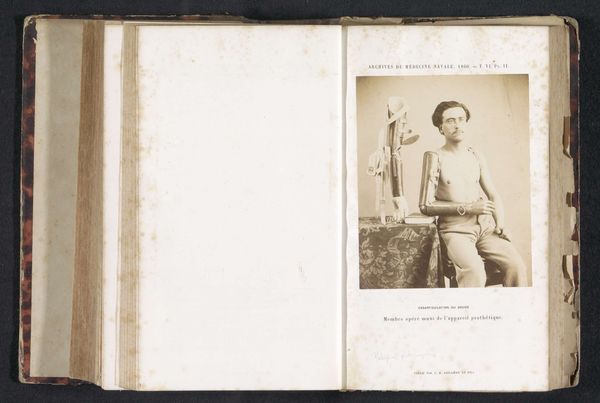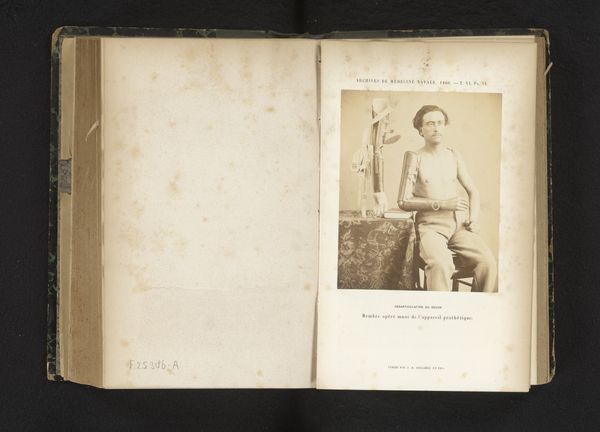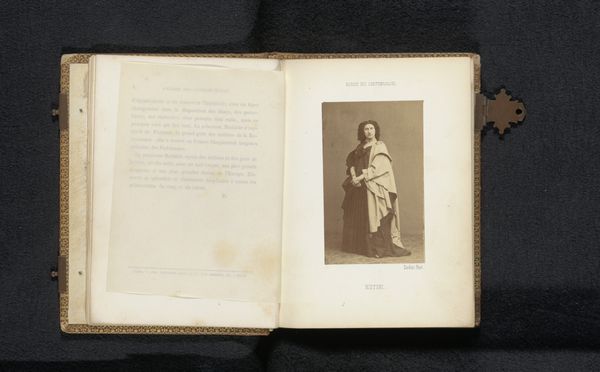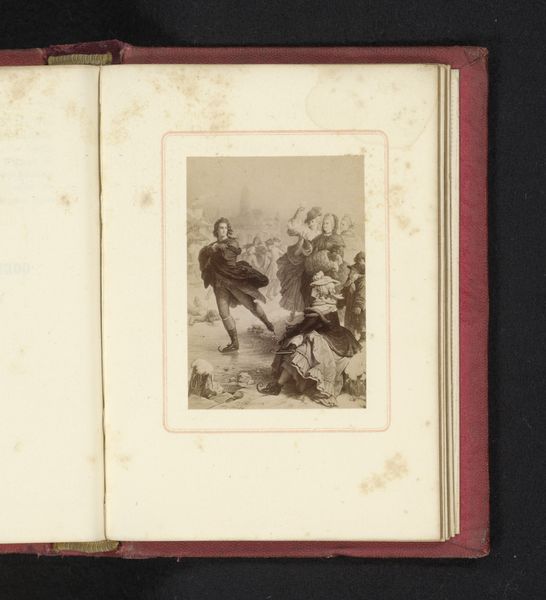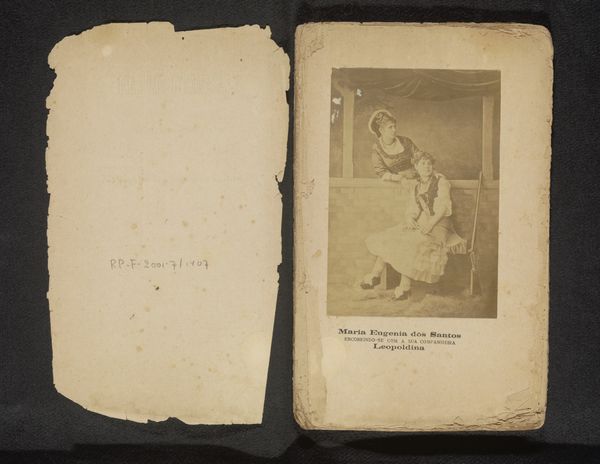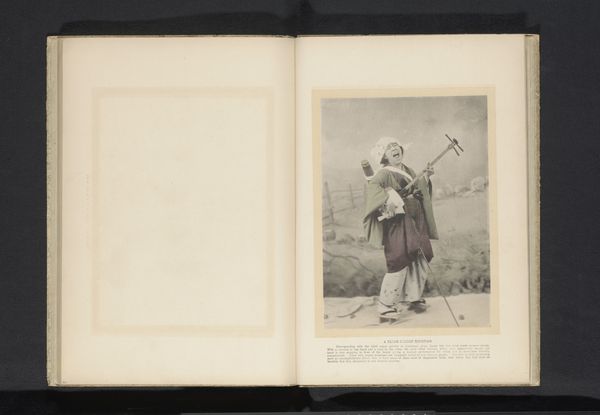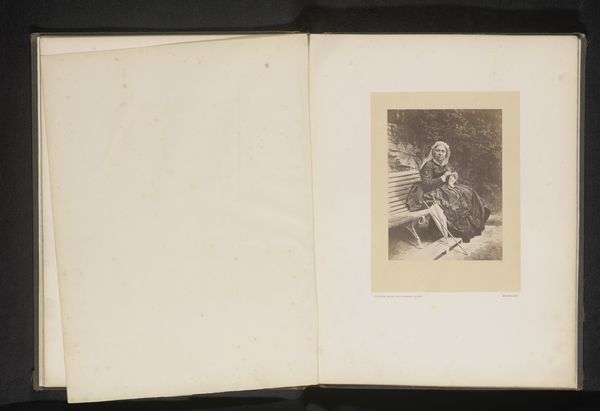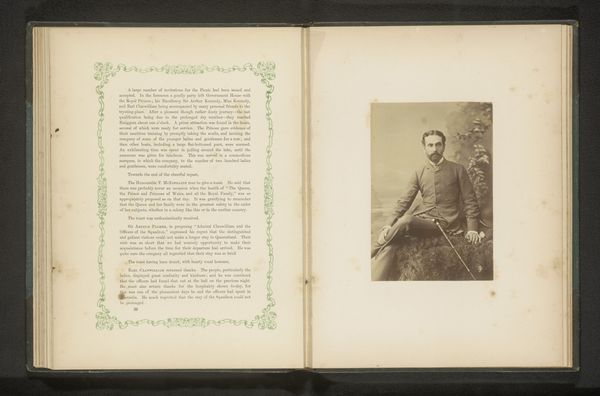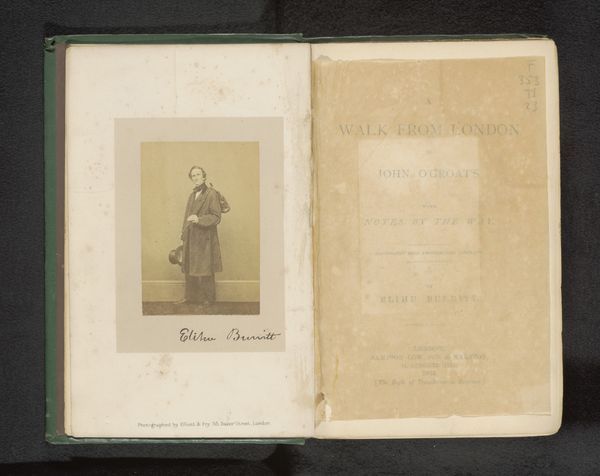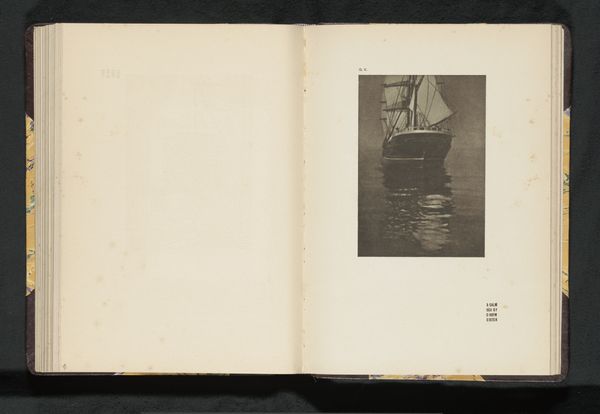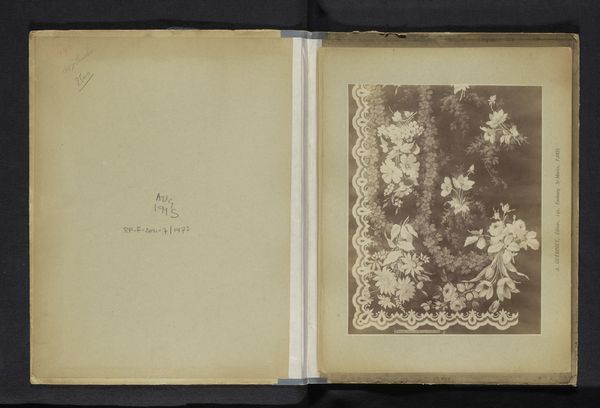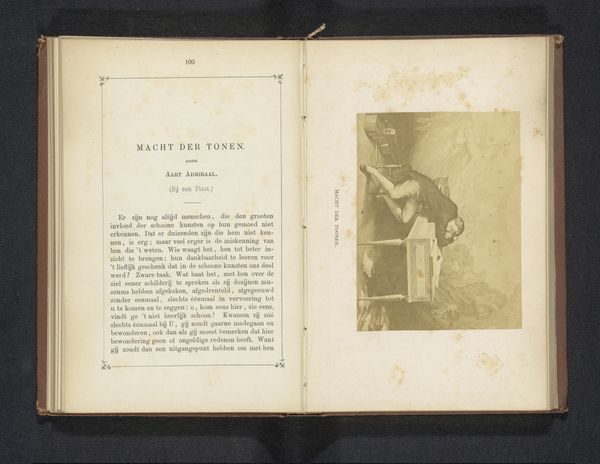
Fotoreproductie van een schilderij van een vioolspelende jongen met slapend meisje bij een rots before 1860
0:00
0:00
Dimensions: height 85 mm, width 65 mm
Copyright: Rijks Museum: Open Domain
Editor: This is a photographic reproduction of a painting called "Violin-Playing Boy with Sleeping Girl by a Rock," from before 1860. It looks like it's in a book of some kind. I am immediately struck by the romantic sentimentality, and how staged it feels. What do you see in this piece that speaks to you? Curator: It's fascinating how this image circulates, isn't it? A photograph *of* a print *of* a painting… Consider the layers of mediation. To me, this image highlights the idealization of childhood common in Romanticism. Look at the implied narrative: a performing child, potentially exploited for labor, and another child, exhausted or ill, finding respite. The sentimental framing softens potential social critique, don’t you think? What happens when we examine those contrasts? Editor: That's an interesting point, framing this scene of childhood within those historical realities. I initially saw it as just a sweet, somewhat idealized depiction, but now I am questioning its intended audience and their perspective. The girl's vulnerability definitely stands out now. Curator: Exactly. How does gender play into this dynamic? The boy is active, seemingly providing (however poorly, indicated by the sleeping child), while the girl is passive, vulnerable. The composition reinforces traditional gender roles, normalizing that power dynamic in early industrial capitalist economies. Is it innocent? Or is it actively shaping perceptions? Editor: It's definitely more complicated than it first appears. I hadn’t considered the socioeconomic context shaping the subjects or the audience. Now I am curious about similar depictions and what they reflect about 19th century society. Curator: Precisely. It is by interrogating what these images normalize that we unearth their latent ideologies. The 'sweetness' then becomes a tool for reinforcing societal structures. This has certainly given me a new direction for future analysis.
Comments
No comments
Be the first to comment and join the conversation on the ultimate creative platform.
